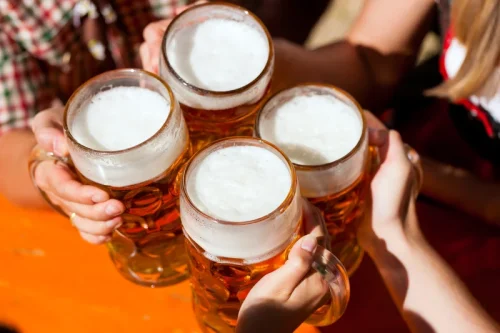
It can seem as if the parent is telling them not to feel how they feel or that their problems don’t justify negative feelings. It sends the message that the parent isn’t comfortable with their child’s negative feelings and would prefer them to skip straight to feeling better. Instead, parents could simply listen actively to what their child is relating, without interruption, even if it doesn’t feel proactive. It’s understandable to be concerned about relapse after completing a substance abuse treatment program.

Understanding Internal and External Addiction Triggers
We are here to help you maximize your chances of sustaining lasting sobriety. Keeping a trigger diary is an effective way for individuals to identify and anticipate triggers in their daily lives. When someone records detailed information on what, who, when, and where was the motivation before their use or craving, they can gain insight into how to reduce temptation https://ecosoberhouse.com/article/psychological-dependence-on-alcohol-physiological-addiction-symptoms/ or take preventive action. With an awareness of potential triggers and a plan in place for avoiding them, you can work towards achieving long-term sobriety. In simple terms, a trigger is anything that brings back thoughts, feelings, or memories of an addiction. You might be worried that this distraction tactic might come across as rude if you’re out in public.
- Second, keep in mind that one of the most powerful tools we have in our relationships is our response to our partners.
- These need to be people that you’ll feel comfortable calling on if you encounter one of your triggers out in the world and need someone to talk to as a tool to help prevent relapse.
- For example, a news report covering a trauma similar to what you experienced might trigger symptoms of PTSD.
- The person in recovery will also need to set boundaries for themselves, for places they will not go to or events they won’t attend.
- Some people will try to avoid it altogether, which can lead to prolonged isolation and mounting loneliness.
- External triggers, on the other hand, stem from environmental factors.
Admissions Process
Addiction is a chronic brain disease with a relapse rate similar to that of other chronic conditions like diabetes. When people stop their treatment plans for chronic conditions, they are more likely to relapse. Using drugs or alcohol over the long term builds associations between a person’s daily routine and their experiences with intoxication. As a result, certain cues immediately flip the switch on the association and activate the craving reflex in response to external or internal triggers in recovery.

Stimulant Use Disorder
The most effective way to address relapse triggers is through a comprehensive approach that addresses both internal and external triggers. Developing coping strategies for emotional factors and skills to navigate environmental triggers is crucial. Stress is a potent internal trigger that can significantly impact individuals in recovery.
The Importance of Identifying Addiction Triggers in Recovery

What may be a normal, everyday situation or minor inconvenience for some may be triggering to someone living with mental illness. Triggers refer to the experience of having an emotional reaction to a disturbing topic (such as violence or the mention of suicide) in the media or a social setting. However, there is a difference between being triggered and being uncomfortable. If a former drug user used to meet their dealer at a particular corner gas station, that gas station may become a powerful trigger. Internal triggers have the potential to be used in a wide range of industries, including healthcare, education, and finance. When an adult child approaches a parent with a problem, the parent may immediately jump into solution mode.
Understanding Internal Triggers
If you are newly in recovery, you may want to consider an outpatient program for your first few months into sobriety. If you or a loved one is grappling with addiction challenges, the professionals at Greenbriar Treatment Center are here to assist. Our internal and external triggers team is available 24 hours a day, 7 days a week to answer any questions you may have. Give us a call today and begin your journey toward long-term recovery. Uplift Recovery Center provides you with recovery in a loving, professional environment.
Examples of successful designs that incorporate Internal Triggers

Although many people who seek treatment for addiction hope that they can stay sober afterwards, approximately 40 to 60 percent of people relapse. A relapse doesn’t mean that you failed or that the treatment wasn’t successful. Treatment for many chronic illnesses, including addiction, often requires multiple rounds. Even though relapse is a common part of recovery, it can be serious or fatal. Exercise and physical activity can be incredibly beneficial in managing addiction triggers. Exercise releases endorphins that produce a natural “high,” which can provide an alternative to drugs or alcohol.
Furthermore, a trigger diary can allow people in recovery to recognize patterns in their behaviors and develop more effective coping strategies for future situations. It is important to practice self-care by engaging in healthy activities such as exercise and meditation to reduce the risk of relapse due to emotional addiction triggers. Building a solid support system with friends and family who understand your recovery journey is also beneficial.
- If you or someone you love is struggling with substance abuse, Summit Behavioral Health is the place to turn.
- There are also many alternatives to 12-step programs that may work better for you, both in-person and virtual or online.
- Further research and experimentation in the area of internal triggers in UX design can lead to even more effective and successful designs.
- For more information or to start a treatment program, reach out to our team of addiction professionals.
- Internal triggers are emotions, feelings, thoughts, and memories that make the person want to use alcohol or drugs.
